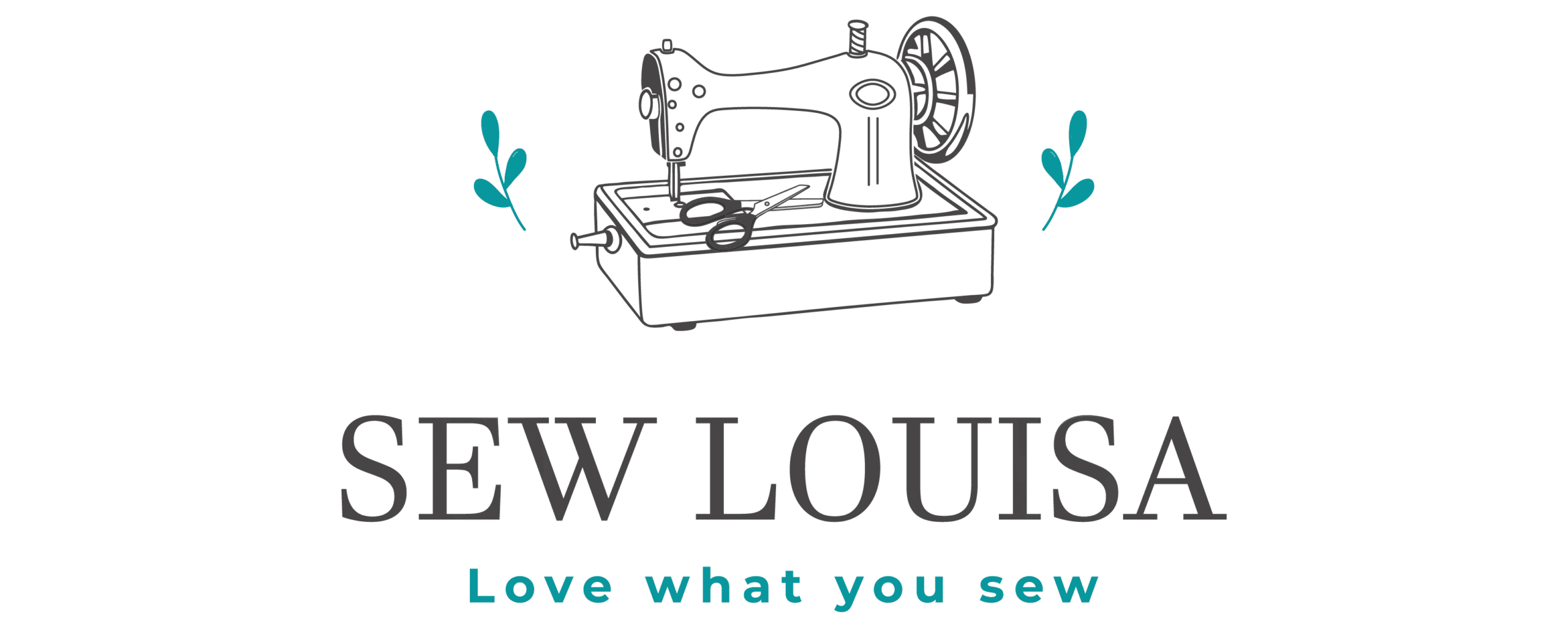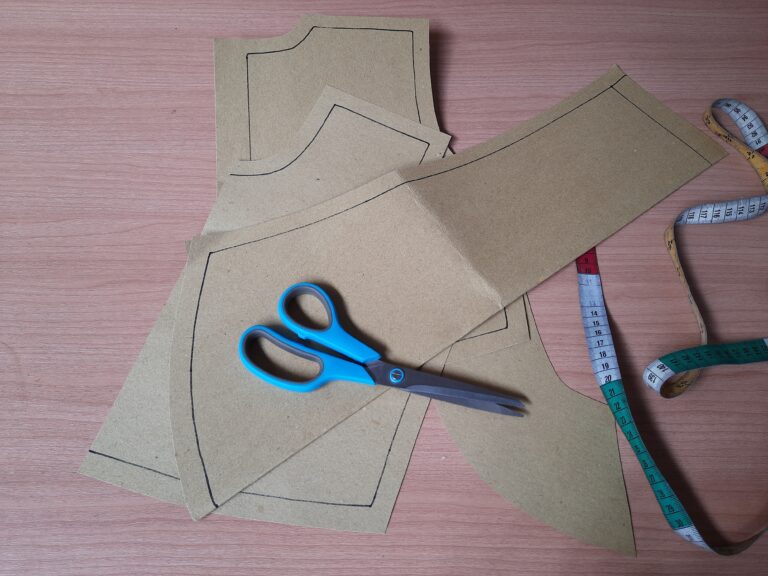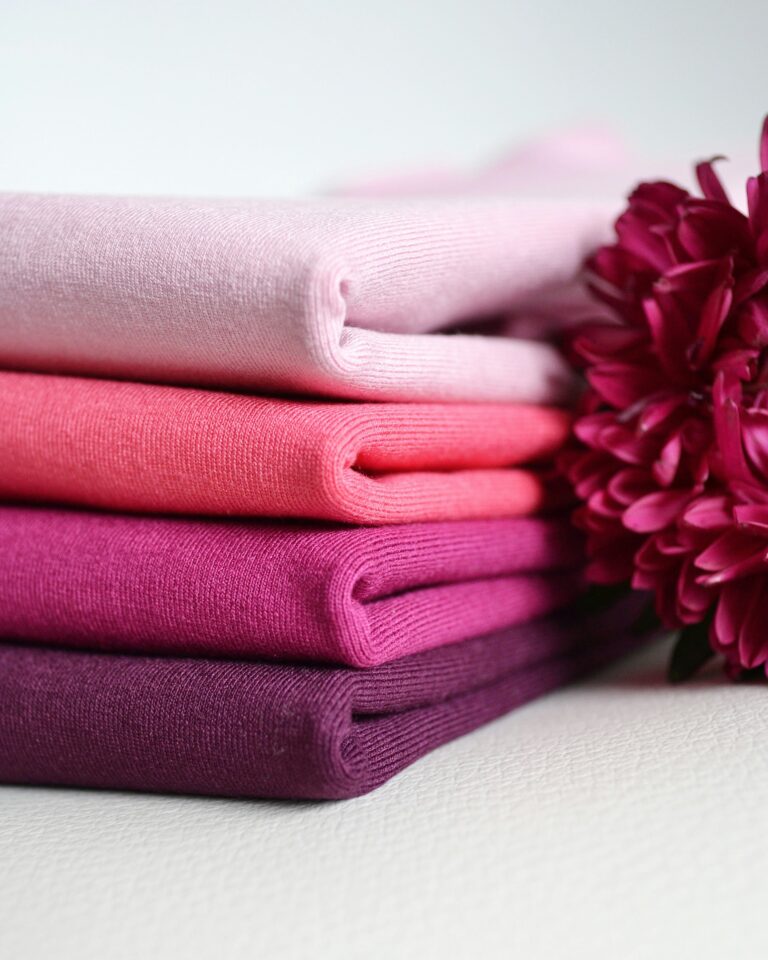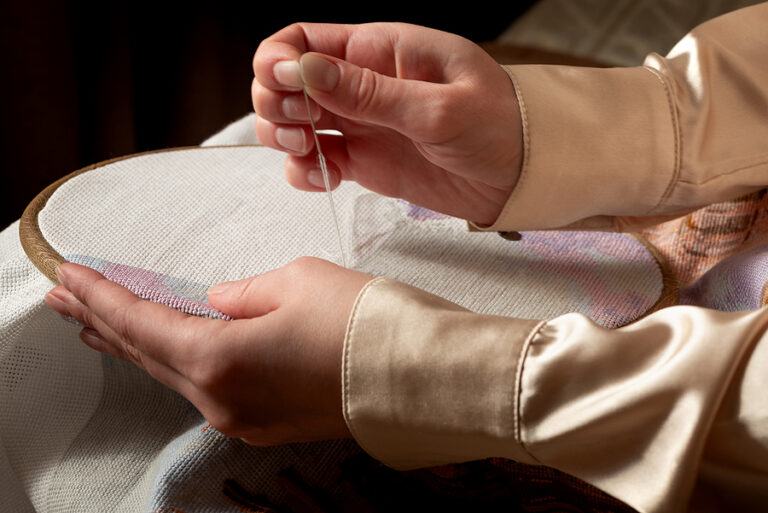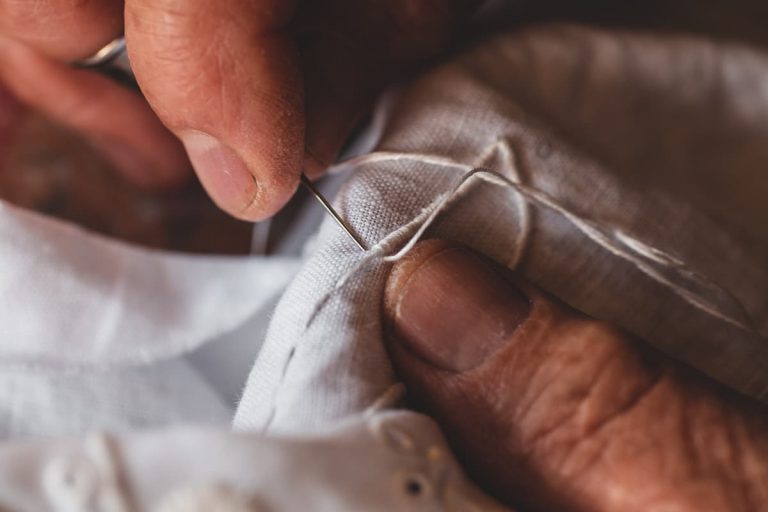Introduction to 15 Essential sewing tools
Starting a new hobby can be daunting, especially when figuring out essential tools. Here’s my list of 15 must-have sewing tools that I use regularly. This isn’t an exhaustive list, but these are the ones I recommend.
Essential sewing tool: Machine Sewing thread
When choosing thread for your machine, always opt for the best quality. This essential sewing tool will become part of your project after all. I almost exclusively use cotton quilting fabric (the good £15 a metre kind!) and prefer cotton thread for piecing and sewing. My favourite thread for this is Aurfil 50wt – it’s a lovely strong and smooth thread, no more fluff and lint in the machine! For general projects, I recommend an all-purpose sewing thread like Coats & Clark or Gütermann.
The second type of thread I like is Glide Thread, a polyester option that has a fantastic sheen and gloss to it. I grab this when I’m quilting, or when I just want to use a polyester thread. When selecting a polyester option, consider the right thread color to match your fabric.
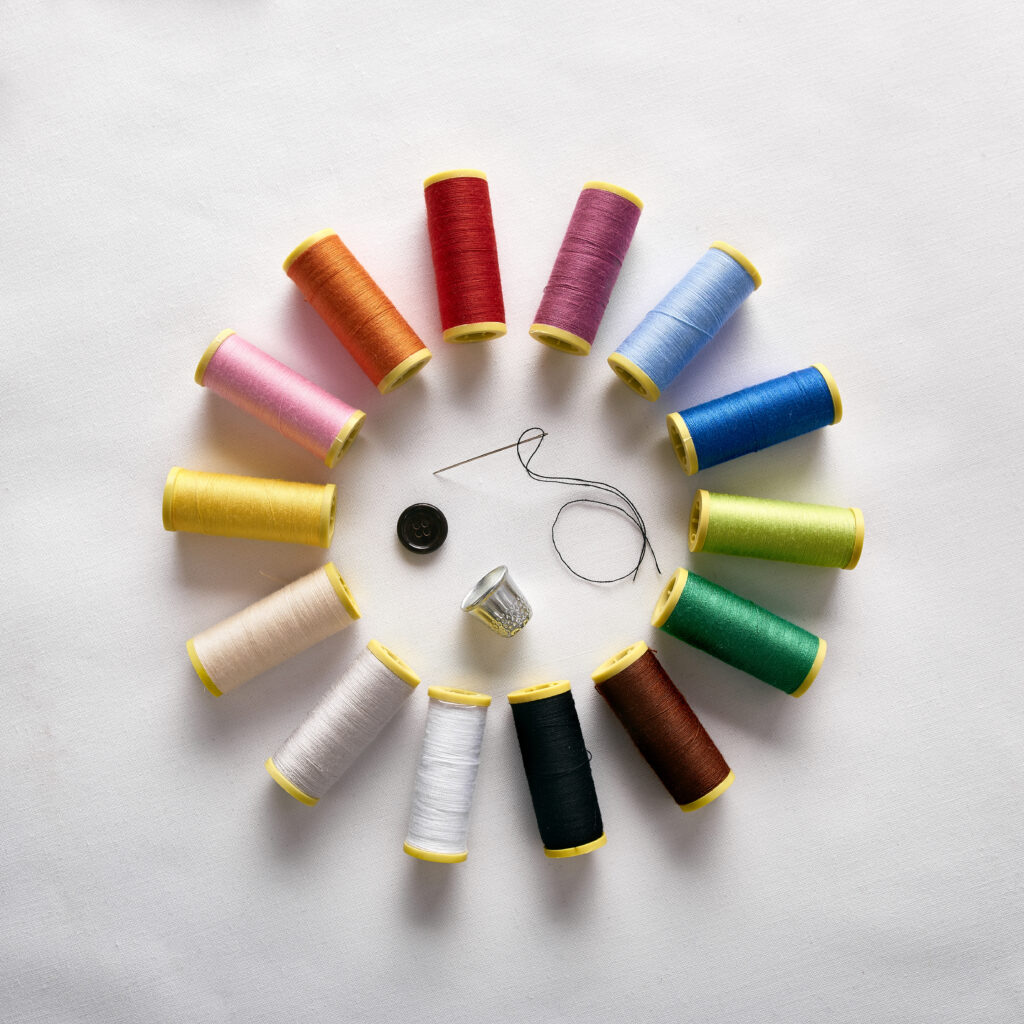
Essential sewing tool: Sewing Machine needles

My second choice in essential sewing tools I’m going to list sewing machine needles. The reason I’m not including hand needles is that, well I don’t really do hand sewing. The only exception is when I sewing on a quilt binding That’s what my sewing machine is for! This could be a whole blog post on its own, but I like either Schmetz or organ brand. Both these brands are precision engineered for your machine and won’t use any issue with timing.
When sewing cotton and piecing I like to use a universal size 80/12 needle as I feel this gives me real accurate seams.
Types of Sewing Machine Needles
- Universal Needles: These are the most common type and can be used for a variety of fabrics, including woven and knit materials.
- Ballpoint Needles: Designed for knit fabrics, these needles have a rounded tip that easily slides between the fibers without damaging them.
- Zipper Needles: With a slender shape and a sharp point, zipper needles are perfect for sewing zippers and other close-fitting seams.
- Stretch Needles: Ideal for elastic or stretchy fabrics, these needles have a special design that prevents skipped stitches.
- Quilting Needles: These are specifically made for quilting layers of fabric together, featuring a tapered point that easily pierces through multiple layers.
Needle Sizes for Different Fabrics
The size of the needle you choose is just as important as the type. Here’s a quick guide:
- Lightweight Fabrics (e.g., silk, chiffon): Use size 60/8 to 70/10 needles.
- Medium-weight Fabrics (e.g., cotton, linen): Opt for size 80/12 needles.
- Heavyweight Fabrics (e.g., denim, canvas): Choose size 90/14 or 100/16 needles.
- Stretchy Fabrics (e.g., jersey, spandex): Use ballpoint or stretch needles in sizes 75/11 or 80/12.
When to Replace Worn Out Needles
It’s essential to replace your sewing machine needle regularly. Here are some signs that it’s time for a new one:
- You notice skipped stitches or uneven stitching.
- The needle appears bent or damaged.
- You’re working with a different fabric type than what the needle
Essential sewing tool: Glass headpins and sewing clips
I think of pins as one of the most important sewing tools, especially if you are beginning sewing. Using pins in sewing is crucial for lining up edges and seams accurately. The reason I prefer glass headpins is that they can withstand the heat of an iron without melting, making them ideal for pressing seams. This durability ensures that your work remains neat and organized. Additionally, glass headpins are easier to see and handle compared to traditional plastic ones, reducing the risk of misplacing them.
Recently, I discovered the Clover wonder clips. These are great for bulky fabrics or when a pin would leave a hole. I also use this when I am sewing a quilt to keep fabrics in order and group like with like.
When working with pins, having a good pin cushion is essential. There are various pin cushion types and uses: some are designed to hold specific types of pins, while others offer magnetic properties to easily catch stray pins. It’s also worth noting that there are best practices for using pins which can greatly enhance your sewing experience.
For those looking to enhance their sewing skills, this resource may provide valuable insights and tips.
Essential sewing tool: Fabric Scissors and snips
I won’t tell you how many pairs of scissors I have in my sewing room! This essential sewing tool comes under more the one type of scissor.
One of my most used pairs of scissors is the humble snips. They live right next to my machine, perfect for snipping threads especially when you have been chain piecing. That gets my vote for an essential sewing tool.
Fabric shears or scissors would be my second choice of scissors. A good pair of fabric scissors are invaluable when a rotary cutter is not appropriate. Pinking shears are not a must but are useful for unfinished edges that would otherwise unravel if cutting with a straight edge.
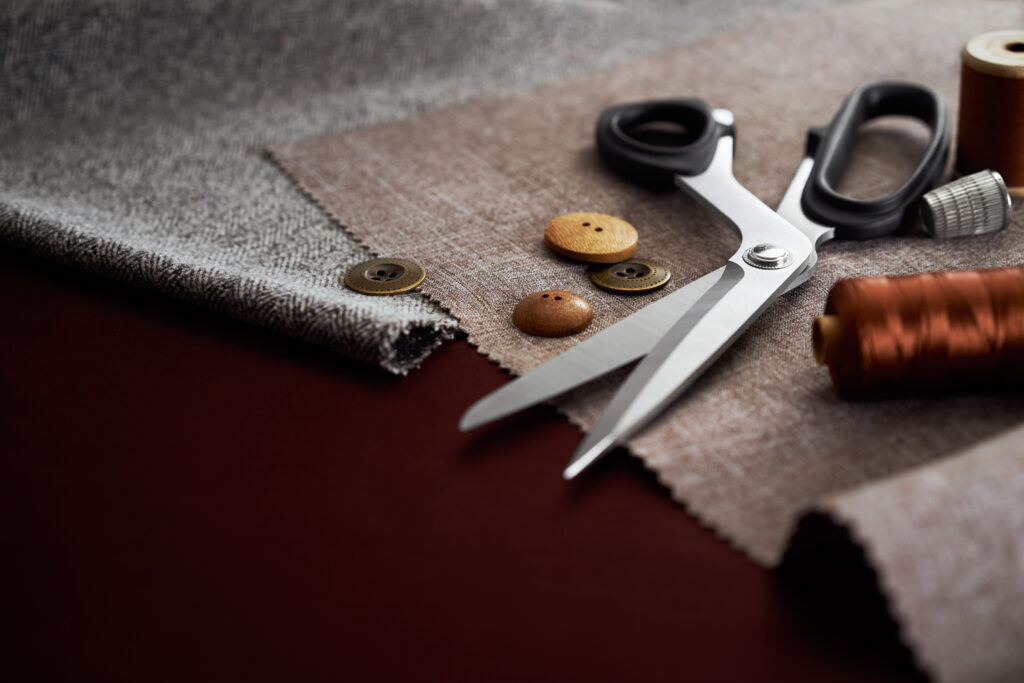
When using fabric scissors, it’s crucial to keep them sharp and well-maintained. Dull scissors can make cutting difficult and may ruin the fabric’s edges. Always use fabric scissors exclusively for fabric to ensure they remain effective and to avoid damaging their blades with other materials.
Here are some maintenance tips for your fabric scissors:
- Regularly clean the blades with a soft cloth to remove any sticky residue.
- Store them in a protective case or with the blades closed to prevent accidents.
- Consider having them professionally sharpened when they become dull.
Pro-Tip
Remember to test marking pens or pencils on a scrap piece of fabric.
If you’re planning to take your sewing projects on the go, it might be worth considering assembling a sewing travel kit that includes all your essential tools like fabric scissors and snips. Also, don’t forget to join our Facebook group where we share tips, tricks, and experiences related to sewing!
Essential sewing tool: Marking pens and tailor’s chalk
Let’s be honest, there will be a time when you will have to mark your fabric. This leads me to my next essential sewing tool. Marking pens, pencils or tailor’s chalk are all going to be useful. Which one you use will depend on the fabric you are marking. This would not be the first choice for couture fabric but for everyday fabric, I go for Frixon markers as they easily can be removed. The downside to the Frixion markers are they are removed by heat so may not also work for your project. In all cases I would recommend testing on a small scrap of the fabric you will be using. That way you’ll know how it will react.
Another effective method for marking fabric is using a tracing wheel and tracing paper. This technique is particularly useful for transferring patterns or markings onto multiple layers of fabric at once. Simply align the tracing paper with your fabric, place it under the tracing wheel, and roll along the desired lines. The pressure from the wheel will create clear impressions on the fabric below.
Tracing wheels come in different styles: smooth edges for straight lines and serrated edges for more textured markings. This method works best with stable fabrics that won’t shift easily, such as cotton or linen.

Essential sewing tool: Rotary cutter
Ah, the rotary my best friend in the sewing room and one of my essential sewing tools. I have three sizes of rotary cutter, 28mm, 45mm and 60mm but it’s the 45mm I reach for the most. I use this in conjunction with my ruler and mat and this enables me to get accurate straight cuts.
If I’m going to be cutting more than about 6 layers of fabric, then I’ll use the larger 60mm cutter. If you notice that you are not getting a clean-cut, or the blade is skipping change your blade. Rotary blades is very sharp and as such, I would avoid using it when crafting with children and if you do, please supervise them. Additionally, consider using a rotary blade sharpener to maintain the sharpness of your blades and extend their lifespan.
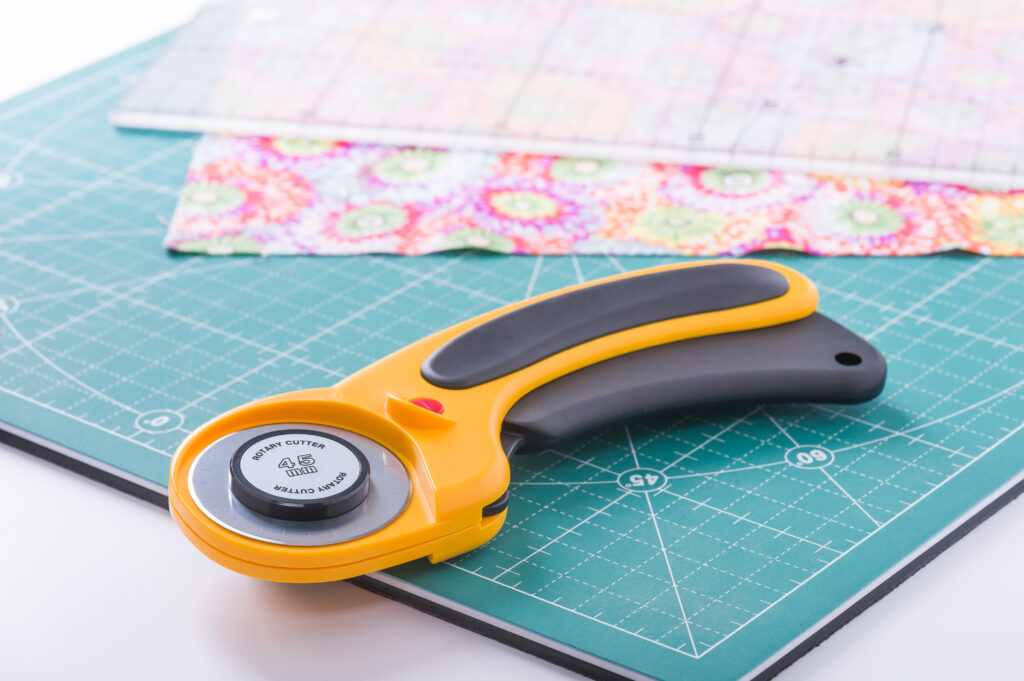
Essential sewing tool: Cutting mat

This essential sewing tool really goes hand in hand with the rotary cutter. Without this, the table or whatever you are cutting on will not be protected. I also think that the mat helps to protect the cutting blade as well, just look for a self-healing cutting mat.
I have several large ones that are on my sewing table so that I ready to cut. A smaller spinning mat which although not an essential sewing tool may be useful for cutting small shapes out.
These mats are not to be used for ironing or pressing as they will warp and twist. Just ask me how I know that!
Essential sewing tools: Rulers

This is most definitely an essential sewing tool if you want to get an accurate straight cut. If you only going to get one quilting ruler, I would recommend the 8 ½ by 24. This will allow you to cut most of the measurements that you will use especially at the beginning. The rulers that I like and use are Creative Grids, Sew Easy and Ommigrid, all excellent rulers.
Additionally, a sewing gauge is a useful measuring tool for smaller measurements or hems. Its adjustable slider makes it easy to ensure consistent widths when folding fabric or measuring seam allowances.
Essential sewing tool: tape measure
The humble tape measure, so useful. I find I reach for this when I am centring an embroidery design on a t-shirt. This is great for measuring small areas or for measuring your body if you are a dressmaker. To measure accurately for garment making, ensure the tape is level and snug against the body without pulling. Take measurements at key points: bust, waist, hips, and inseam, while standing straight and relaxed. I’ll reach for this if I need to place say an applique shape onto a piece of fabric. Much more convenient than reaching for the quilting ruler.
When considering tape measures, flexible ones are ideal for contouring body shapes, while rigid tape measures offer precision in straight lines and flat surfaces.
Pro-Tip
Hang your tape measure on a hook, that way any folds will fall out. Your measurement will be accurate.
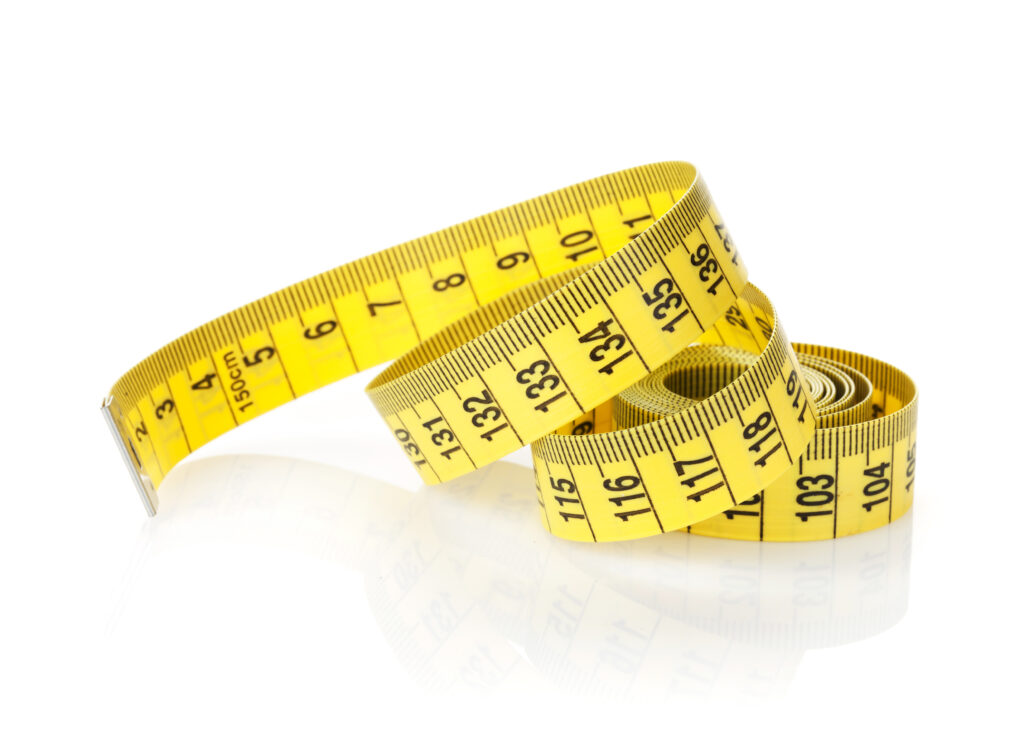
Essential sewing tool: Seam Ripper and Stiletto
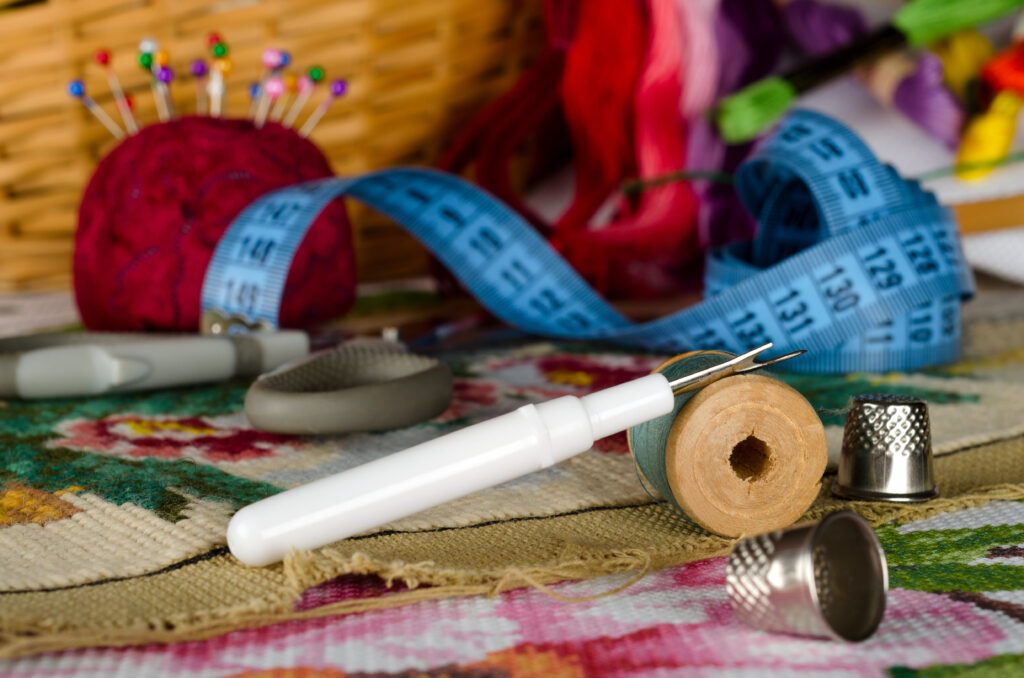
Ok hands up, who reaches for the seam ripper more than the sewing machine! I often make mistakes and that’s fine I’m only human. A seam ripper will help you to remove stitches safely and without stretching the fabric. I have a beautiful one that is handmade but a basic one is just as effective. You can find some useful tips on how to use a seam ripper here.
A stiletto is used when sewing, it helps to keep the edges together. It saves you from having to get your hand too close to the needle.
In addition to these tools, consider having a variety of hand sewing needles on hand. Different types such as universal, ballpoint, and embroidery needles serve specific purposes in garment construction and repairs. Thimbles are also essential for protecting your fingers while hand sewing.
When fastening garments, snaps and buttons are basic notions that provide closure and style. Zippers are crucial for areas requiring flexibility, like skirts or dresses, while elastic comes in various types—such as braided or knit—to offer stretch in waistbands or cuffs.
Lastly, interfacing adds structure to collars and cuffs, ensuring they maintain their shape over time.
Essential sewing tool: Iron
If you want to have neat flat seams then an iron is an essential sewing tool. I recommend a steam iron and this will remove any wrinkles and really flatten seams. I love the Oliso iron, it has really even steam and has either continuous or a spurt of steam. It doesn’t have a large water tank but I think it makes it more portable and easier to use. I also like my mini iron as is perfect to sit on my sewing table, great for small pieces.
For those times when you accidentally sew a hole in your fabric, don’t fret! There are effective techniques available that can help you fix it seamlessly.
Lastly, don’t forget about the importance of having a well-stocked supply of essential sewing supplies which can greatly enhance your sewing experience.
Essential sewing tool: spray sizing/starch
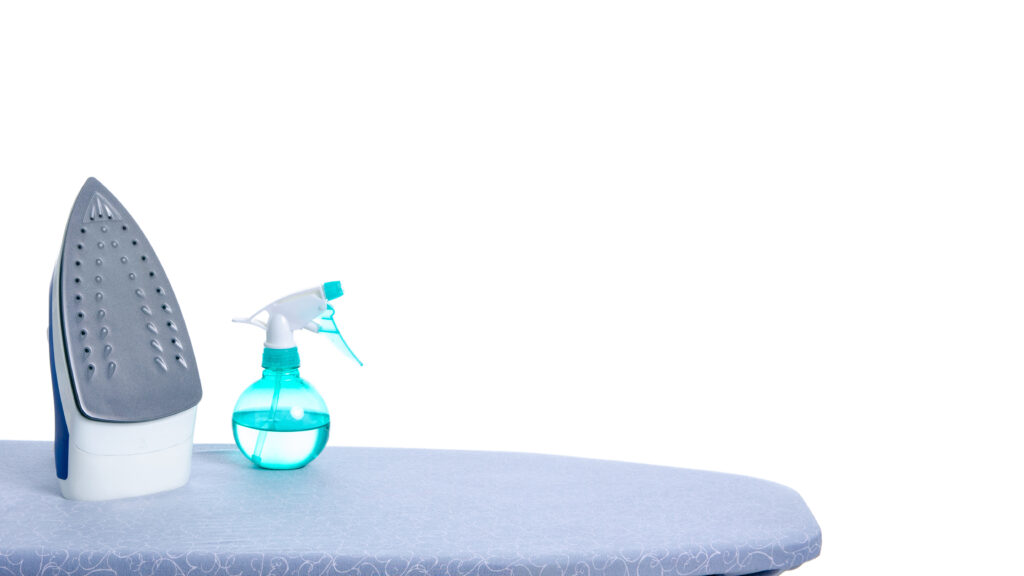
Whenever I’m going to sew a quilt or use quilting cotton I use Mary Ellen’s Best Press. This is an alternative to starch and it won’t leave a white residue on the fabric. Best Press helps to remove wrinkles and give the fabric a bit more body. It doesn’t make the fabric stiff but it makes sewing on the bias more stable. The bias will still stretch so you will have to sew with care.
Spray starch or sizing is an essential part of consumable sewing supplies, especially for basic sewing notions used in garment construction and quilting projects. These products help maintain fabric integrity and ensure smoother sewing experiences.
Essential sewing tools: Sewing Machines
This could be a blog post all on its own but is definitely an essential sewing tool. The best advice that I can give you is to go to your local dealer. That way you can try out different machines from various manufactures. By purchasing from a local dealer when the machine needs to go in for service you’ll have someone local. I use a Brother V5LE and I think that Brother machines have the most user-friendly interface.
When choosing a sewing machine, it’s important to understand the difference between mechanical and computerized machines.
- Mechanical machines operate using gears and levers, allowing for basic stitching functions with manual control. They are often more straightforward and easier to repair.
- Computerized machines offer advanced features such as automatic stitching patterns, adjustable settings, and even embroidery capabilities. They rely on electronic components to function, which can make them more complex but also more versatile.
Regardless of the type you choose, regular servicing and maintenance are crucial for the longevity of your sewing machine. This includes cleaning it regularly, checking for any loose parts, and having it professionally serviced according to the manufacturer’s guidelines. Proper maintenance ensures that your machine runs smoothly and efficiently, preventing costly repairs down the line.
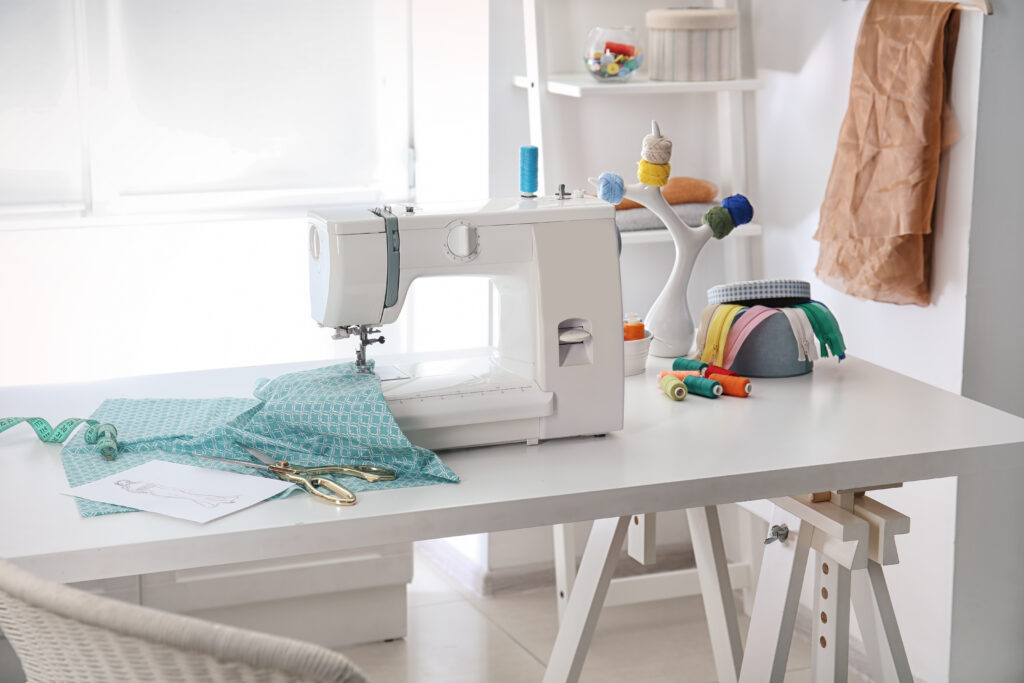
Essential sewing tool: Point turner hera marker
This may be a small tool but I think it’s still an essential tool. Whether you are a dressmaker and quilter or any sewer a point turner will always come in handy.
Any time that you need to poke out corners or edge this is the tool you’ll need. As this tool doesn’t have any sharp points the risk of poking through is very low.
This tool from clover and also be used to mark quilting lines without using any makers.
Conclusion
Although this list may seem long and expensive, not all of these tools will be used at once. Take your time to go through the list and remember that it took me a while to build up my essential sewing tools. I hope this list helps you decide which tools to add to your sewing toolbox.
Please sign up to the Free Sewing Library and grab your free mini guide to the essential tools.
